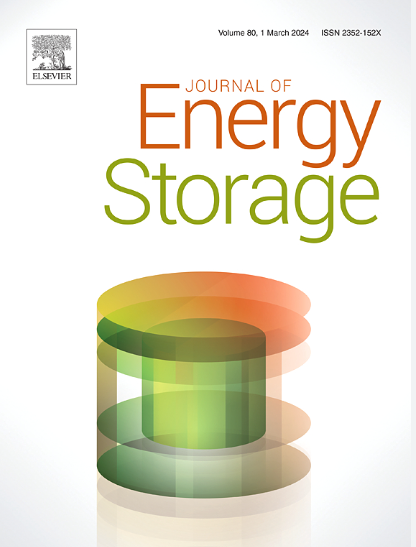Valence-controlled manganese oxide by solvent-assisted permanganate reduction for advanced aqueous zinc-ion batteries
IF 8.9
2区 工程技术
Q1 ENERGY & FUELS
引用次数: 0
Abstract
Manganese oxide-based cathodes (MnOx) play a pivotal role in advancing aqueous Zinc-Ion batteries (AZIB) due to their high theoretical capacity, low cost and environmental friendliness. However, given the MnOx's diverse structural, valence and textural properties, it is challenging to pinpoint the ideal manganese oxide material type and optimize simple and tunable synthesis routes to achieve great capacity retention and rate capability properties. In this work, we develop for the first time a synthesis method controlling the crystallization pathways and valence properties of MnOx materials through permanganate reduction using different reducing agents (Ethanol and Propanal) followed by heat treatment under 500 °C, thus achieving the synthesis of multivalent E500-MnOx (MnO2) and Trivalent P500-MnOx (Mn2O3). As cathode materials in AZIB, P500-MnOx reached a specific capacity of 315 mAh·g−1 without any apparent capacity decay, while E500-MnOx showed a lower specific capacity of 150 mAh·g−1 at 100 mA·g−1 with a capacity retention of only 65 %. Through Ex-Situ XRD and SEM imaging, P500-MnOx exhibited a reversible cycling mechanism compared to its E500-MnOx counterpart which had preoccupied insertion sites.
通过溶剂辅助高锰酸盐还原实现价控氧化锰,用于先进的锌离子水电池
基于氧化锰的阴极(MnOx)具有理论容量高、成本低和环境友好等优点,在推动锌离子水电池(AZIB)的发展中发挥着举足轻重的作用。然而,由于氧化锰的结构、化合价和质地特性各不相同,要确定理想的氧化锰材料类型并优化简单、可调的合成路线,以实现出色的容量保持和速率能力特性,是一项挑战。在这项工作中,我们首次开发了一种合成方法,通过使用不同的还原剂(乙醇和丙醛)进行高锰酸盐还原,然后在 500 °C 下进行热处理,控制氧化锰材料的结晶途径和价态特性,从而实现多价 E500-MnOx (MnO2)和三价 P500-MnOx (Mn2O3)的合成。作为 AZIB 的阴极材料,P500-MnOx 的比容量达到 315 mAh-g-1,且无明显容量衰减;而 E500-MnOx 的比容量较低,在 100 mA-g-1 时为 150 mAh-g-1,容量保持率仅为 65%。通过原位 XRD 和 SEM 成像,与 E500-MnOx 相比,P500-MnOx 表现出一种可逆循环机制,因为 E500-MnOx 的插入位点被预先占据。
本文章由计算机程序翻译,如有差异,请以英文原文为准。
求助全文
约1分钟内获得全文
求助全文
来源期刊

Journal of energy storage
Energy-Renewable Energy, Sustainability and the Environment
CiteScore
11.80
自引率
24.50%
发文量
2262
审稿时长
69 days
期刊介绍:
Journal of energy storage focusses on all aspects of energy storage, in particular systems integration, electric grid integration, modelling and analysis, novel energy storage technologies, sizing and management strategies, business models for operation of storage systems and energy storage developments worldwide.
 求助内容:
求助内容: 应助结果提醒方式:
应助结果提醒方式:


